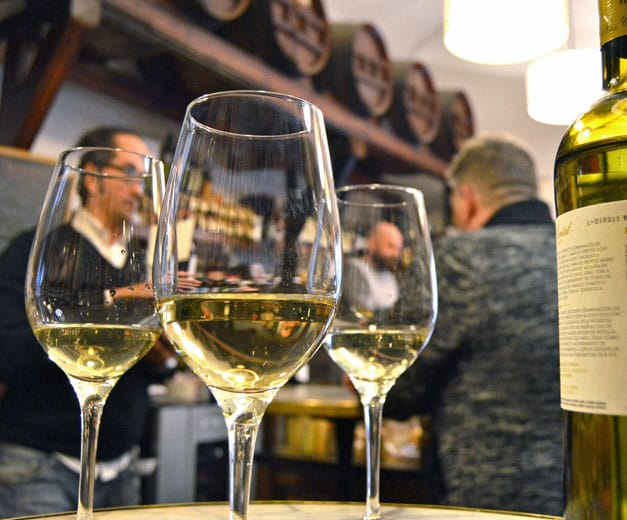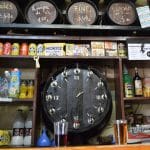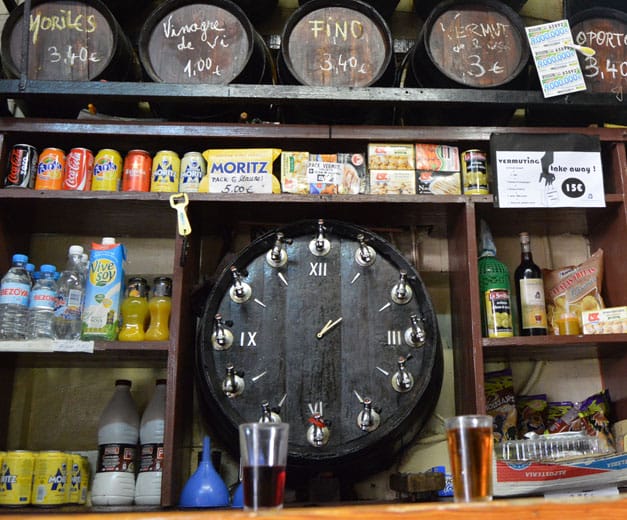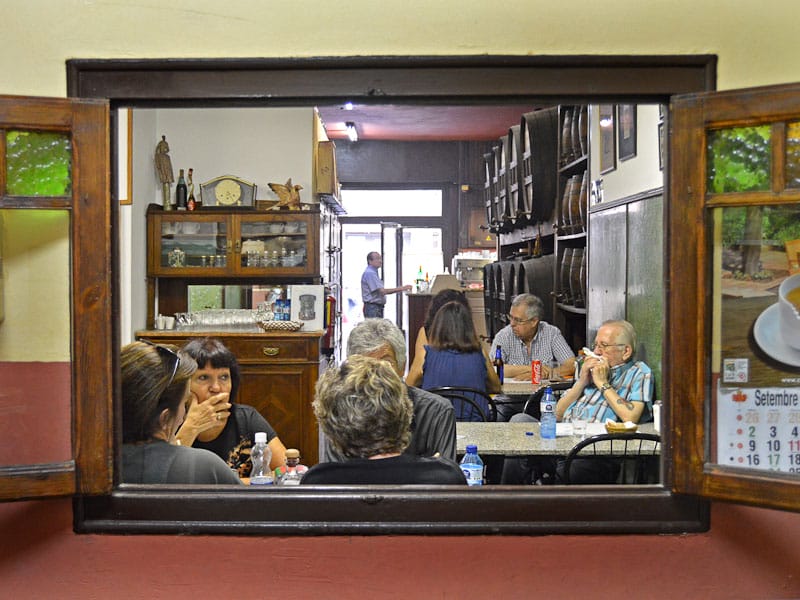When we think of white wine in Catalonia, we think of its seemingly endless possibilities. Production of whites here has a 2,000-year-old history. The wide-ranging diversity in the area’s Mediterranean climate and calcareous soils, from the mountains to the sea, and the combination of old grape varieties and newly introduced “foreigners” with traditional and experimental methods of production make for innumerable styles and no taboos. Who knew white was a color with so many variations?
The traditional Catalan grape varieties used to make white wine are mainly macabeo, xarel-lo, parellada and garnatxa blanca, but this area of Spain has the largest number of white grapes included in all its protected appellations (D.O.). Where other Spanish D.O.s usually are deeply defined by one or a few varieties, in the Catalunya D.O. there are more than 16 allowed – 35 counting the reds. In fact, this umbrella appellation, which covers wines that do not fall under the 10 subregion designations (Montsant, Penedès, etc.), was created to allow the use of all the grapes of the other Catalan designations in the entire area. It implicitly gives freedom to Catalan winemakers to express more than the old narrower conceptions of terroir and opens the doors to experimentation.
To better understand Catalan white wines, we spoke with the managers of two neighborhood wine shops, serious connoisseurs of Spanish and Catalan wine. Both places offer many wines to sample by the glass, along with delicious bites to go with them.
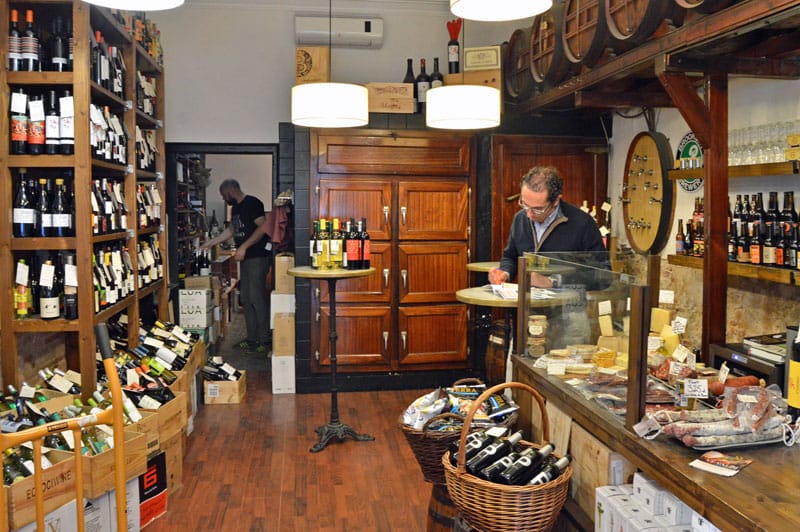
In Gràcia, we visited Bodega Bonavista, a young wine shop that is also a cozy delicatessen/tapas bar, with an impeccably curated selection of wines offered at fair prices. This bodega was a colmado, or traditional grocery, from 1938 to 2006. Today, Bonavista is owned by Marc Vidal, a Catalan wine merchant for more than 15 years, and his Norwegian partner, Christopher Grenness, formerly a consultant for the UN. They stock about 300 wines that change yearly, usually tasting around 20 bottles for each one that they decide to sell in the shop. Customers can sip their selections and nibble on wonderful cured sausages and cheeses at the few tables in the shop. Bonavista sells European craft and imported beers and other treasures as well.
We also talked to Daniela Sanjuán, sommelier and manager of L’Hereu Vinacoteca Xarcutería, in Sant Antoni. L’Hereu has been run by the Barot family for 25 years and sells 1,700 different wines and cavas by the bottle, dispenses eight kinds of bulk wine from 600-liter wooden barrels and also serves many appealing sausages, hams and cheeses. Every weekend, the shop hosts wine tastings and twice a month holds wine-and-food pairing events, sometimes even in collaboration with restaurants. Daniela estimates that some 30 to 40 percent of the shop’s wines are Catalan, and she says that the Catalan whites most in demand are, without any doubt, those of D.O. Penedès.
Penedès is the largest area in Catalonia specializing in white wine, in no small part because of all the juice from there that’s destined for cava. Although producers are permitted to vinify all the varieties included in the eponymous D.O., including such international varieties as chardonnay, sauvignon blanc and riesling, the main varieties grown and used are still the traditional macabeo, parellada and xarel-lo. Xarel-lo in particular is winning more and more fans as a varietal wine. This extraordinarily delicate grape possesses aromas with tropical notes and has just a touch of minerality in the glass. Both Daniela and Christopher recommend tasting the biodynamically made Pardas Xarel-lo, which undergoes a single fermentation and sits for ten days in wooden barrels, as well as the fancier, more conventional Xitxarel-lo, with its funny bottle covered in old Catalan insults. In a completely different vein, Penedès produces wines such as Giró Ribot’s Giró2, made from an ancient native grape; Finca Parera Blanc, made from gewürztraminer; and Mas Rodó, made from montonega and riesling. All of these are made possible by the cold weather in their terroirs. “It’s impossible for someone to not like Penedès white wine,” Christopher says, “because there are infinitely many of them.”

In contrast, the Terra Alta D.O. specializes in garnatxa blanca, a traditional Catalan grape that makes a full-bodied, structured wine, perfect for combining with strong-flavored, oily fish, white meat and even powerful sauces. Terra Alta also produces blends of garnatxa blanca with a small percentage of other Catalan varieties, such as macabeo or vinyater. Try Edetària’s Edetana Blanc, which Daniela considers one of the best among Terra Alta wines. Edetària makes white wines capable of aging ten years in the bottle.
Aside from the Catalunya D.O., Costers del Segre is the most experimental and diverse appellation. This area is composed of seven subareas with different soils and climates. Bodega L’Olivera is a cooperative that not only produces wonderful wines and olive oil, but also engages in social enterprise, providing work and support for disabled persons. Christopher recommends L’Olivera’s Blanc de Serè, made from macabeo, parellada and chardonnay, and Eixaders, a lovely chardonnay. Daniela urged us to try the 2012 Cristiari from Vall de Baldomar, made from Müller-Thurgau and pinot blanc.
With so many white wines to choose from, it’s hard to know where to start, but pay a visit to Christopher and Daniela and they’ll point you in the right direction.
Published on November 28, 2013
Related stories
July 8, 2013
BarcelonaIn Spain, conservas, or foods preserved in cans and jars, are not simply a matter of economic survival or a source of basic nutrition for students, hikers, military recruits and the like. Rather, the tradition of conservas more resembles that of keeping one’s most beautiful jewelry locked safe in a strongbox, to be brought out…
March 11, 2014
BarcelonaFor so long, bulk wine has been synonymous with plonk – even in a country like Spain, where buying wine straight from the barrel was standard practice up until the 1980s, when it was largely replaced by bottles with certified designations of origin. We are well acquainted with the bad stuff, which we call vino…
October 7, 2013
Barcelona | By Claire Gledhill
BarcelonaAt first glance, Bodega Manolo seems like the usual wine shop/tapas bar that Barcelona does so well: a solid place to replenish our wine stocks from the barrels, quench our thirst with a cold caña or satisfy our hunger pangs with a vermut and a tapa or two of oil-drenched anchovies. None of which sound…







































